Bicycling in Vienna

This is the most bike friendly city I've ever seen (I'm not that well traveled). Bike paths and bike lanes are all over the place. Families with small children were everywhere, walking or biking around this busy city. Like many of the paths, this bridge has separate lanes for riding and walking.
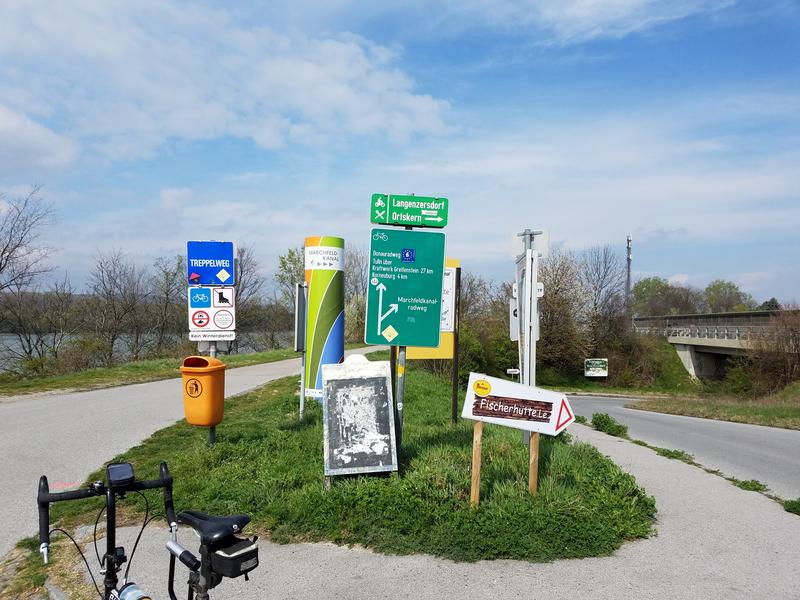
A ride along the Danube took me outside the city. These signs suggest local food is nearby. My Bike Friday travel bicycle is visible in the foreground.
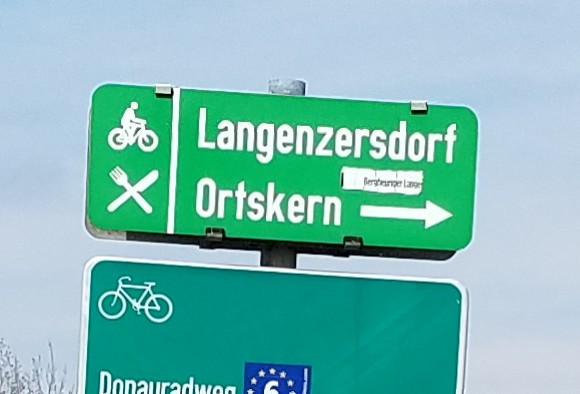
Detail. We need signs like this on bike paths in the USA. We have gas/food/lodging signs on freeways, but all I ever see on a bike path is an advert for a bike shop. People on bikes need food, too. And coffee. I ride to coffee shops much, much more often than I ride to bike shops.
In the USA, I often ride tricky routes to avoid the busiest and most dangerous roads. Sometimes, when looking at a map and planning a route, I look for places where people walking are likely to have created shortcuts. Sometimes my educated-guess shortcuts turn out to exist, in the form of an opening cut in a fence. Often the shortcut is missisng, but I can see where the fence-cutters and the establishment have been battling it out. In one spot, between National Harbor (in Maryland, across the Potomac River from Alexandria, Virginia) and the adjacent homes, a fence has been reinforced (to keep the vertical bars of the fence from being bent) and reinforced again with chainlink fencing over the original fencing. National Harbor does not want dirty fence-cutter money polluting their shops.
Long story short, I'm glad folks in Austria were welcoming to my dirty cyclist money. I wish the various Chambers of Commerce in towns all over the USA felt the same way.
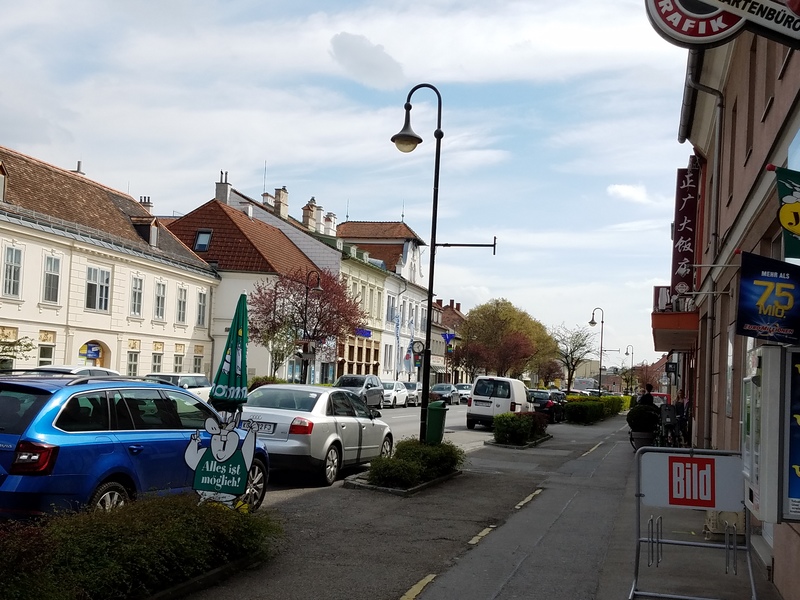
I rode past the obvious biker restaurant just off the trail to the nearby town to eat at a regular restaurant (which had bike parking next to the front door). An advantage of wearing regular clothes for a bike ride is they don't stare at you in a restaurant. At least not much (I was dining alone, which is unusual). Even the small town had cycletracks, separate lanes for biking. However, unlike in Vienna, the cycling and walking areas were two halves of a sidewalk, separated by a stripe of paint.
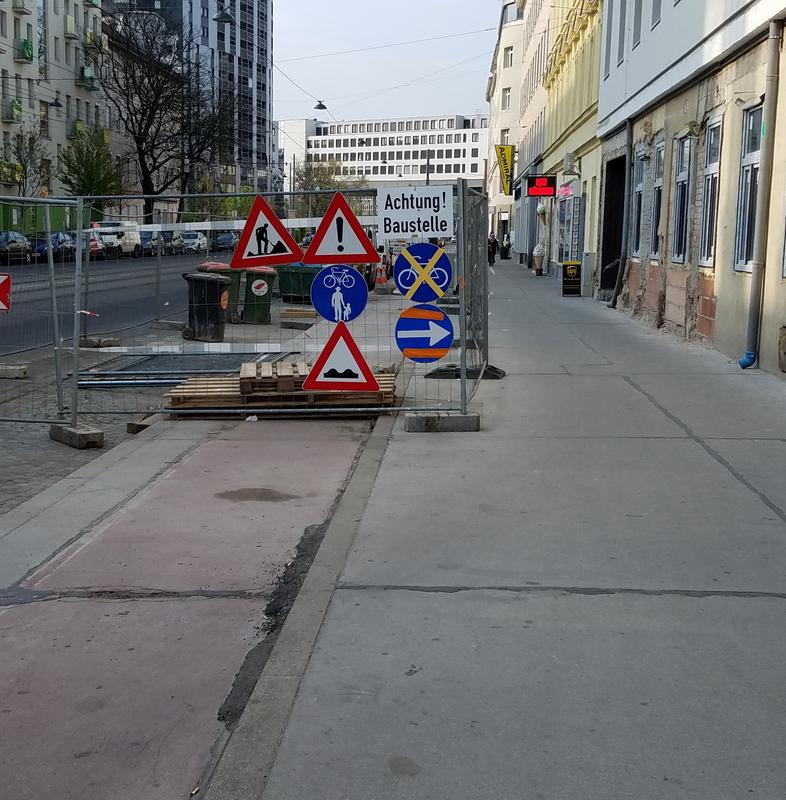
In Vienna, the cycletracks were separated from the road by a curb and a vertical rise. Another curb separated the cycletrack from the sidewalk. In this spot, where road work was blocking the cycletrack, a little bit of asphalt was added to the curb to make a ramp. That way people on bicycles can ride up onto the sidewalk and around the work area. The round sign with the bicycle, an adult, and a child reminds people to be careful when riding on a sidewalk with pedestrians. Very thoughtful.
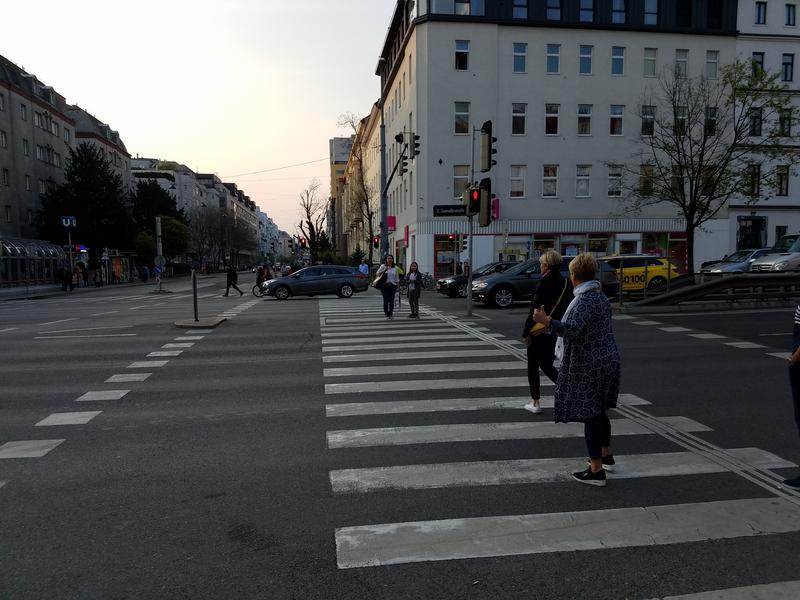
Markings at intersections connect cycletracks. Here there are bike lanes to the right and the left of the crosswalk (wide-striped area). They connect to bike lanes going in multiple directions.
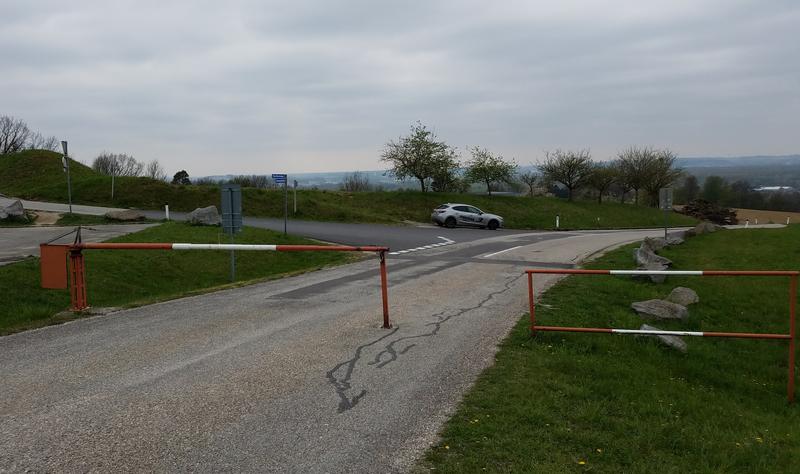
This gate blocks cars while leaving a gap for bicycles at the entrance to a memorial park. Why can't they do this in the US? As best I can tell, the US National Park Service thinks customers only arrive in cars, even to parks that have bike paths.
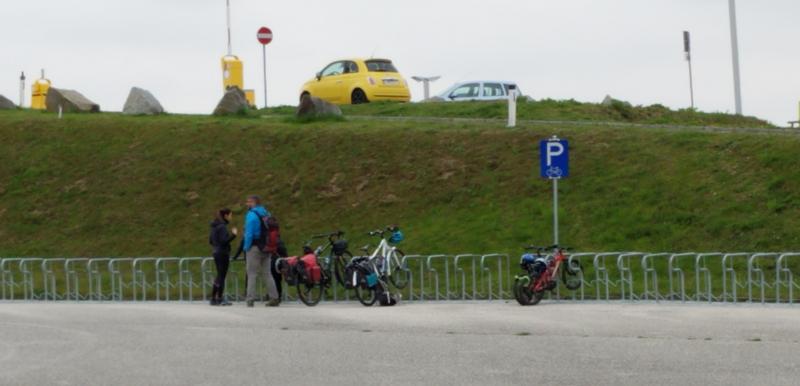
Bike parking at the park.
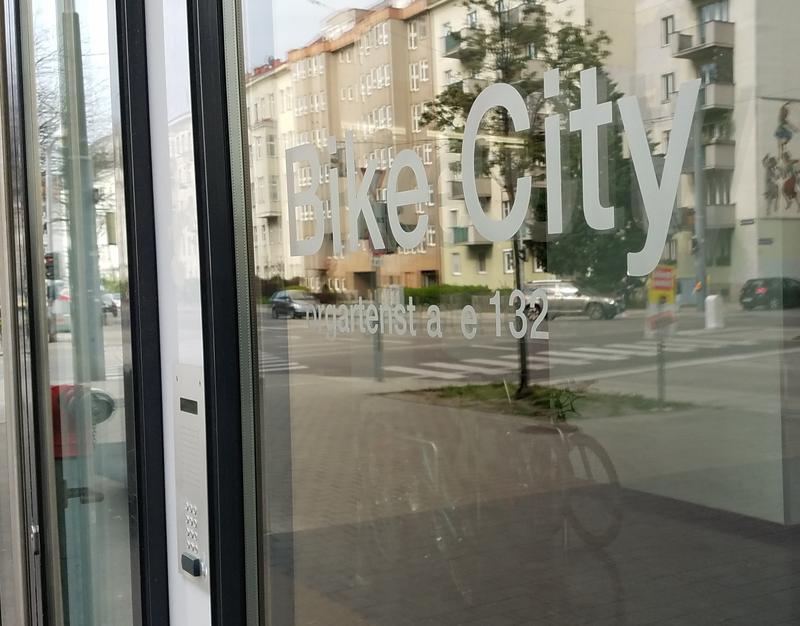
Near my hotel, an apartment building is labelled Bike City; it has bike parking visible inside the front door (for visitors, I think). I wonder if I just happenned to be in the part of town with the best bicyle network? If I go back I plan to bicycle in more than just Districts 1 and 2 and the Danube.
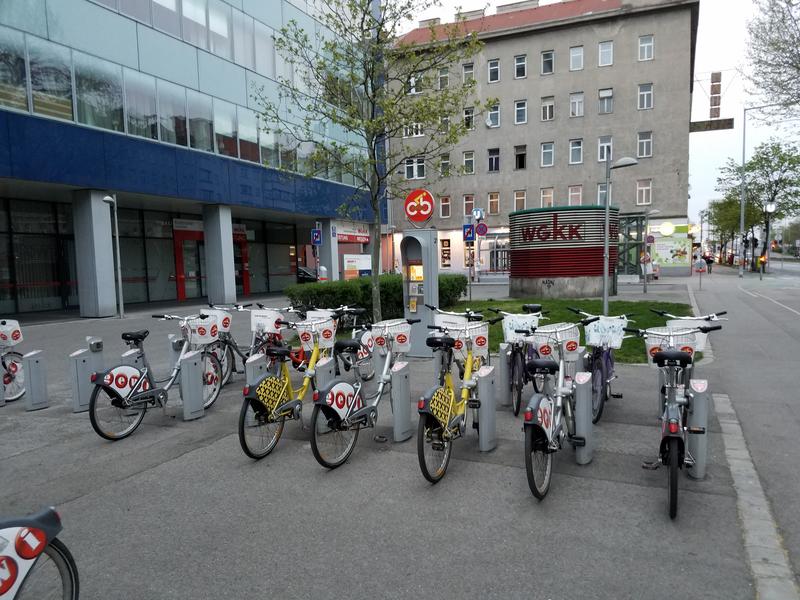
Vienna also has a bikshare system.

On one of my bike rides I saw a large fenced area with a "traffic garden." School children were riding bicycles and learning the rules of the road.
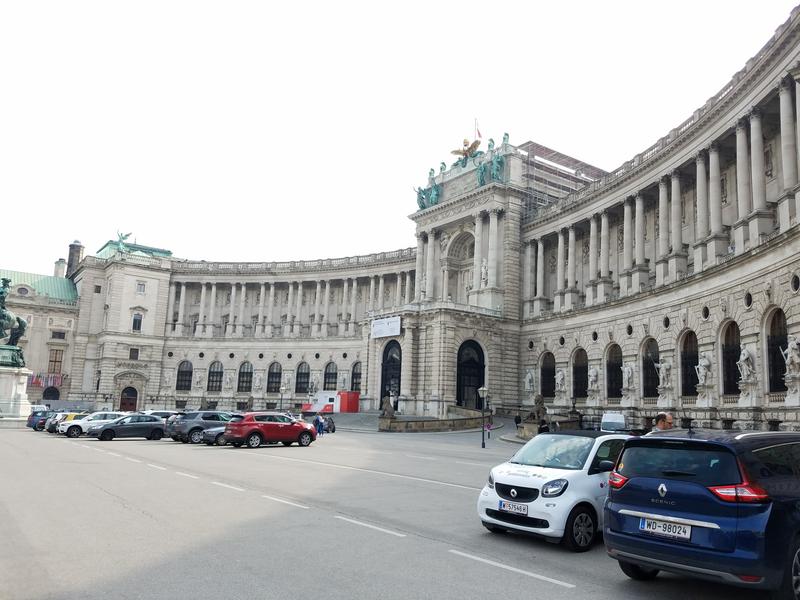
Not everything is all about transit/walking/bicycling. This area in front of the Hoffburg palace, for example, appears to be the Habsburg imperial parking lot.
Back to
Jonathan's Page
Bicycling in Vienna / Jonathan Krall / revised January 2020











